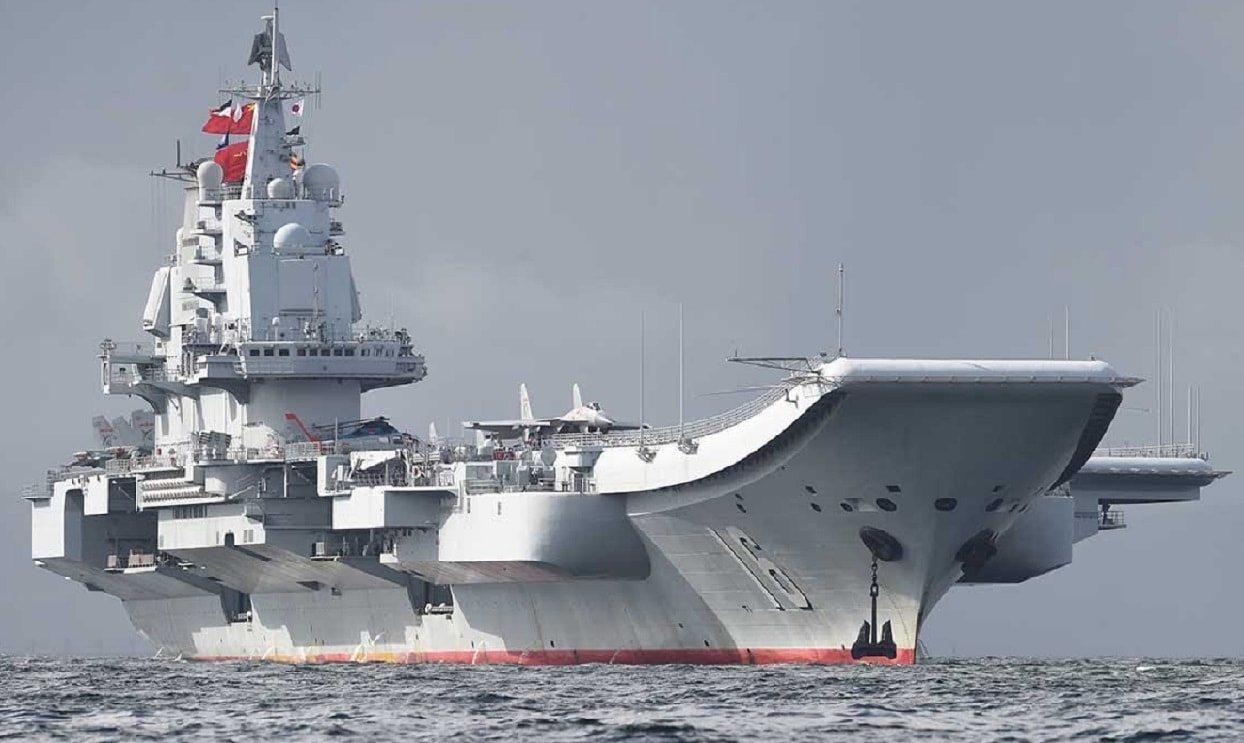Details on the development of China’s fourth aircraft carrier remain scarce, so 1945 asked two experts to shine some light on the subject.
It appears that the People’s Liberation Army Navy’s, or PLAN’s, Type 004 carrier will have a flat top instead of a ski jump deck. It probably will not be nuclear-powered, although that is yet to be determined. The carrier air wing will have modern fighters, anti-submarine airplanes, and airborne early-warning craft.
The PLAN wants its fourth carrier to be a significant asset in executing China’s so-called distant sea strategy.
Will Type 004 Be Nuclear-Powered?
Brent Sadler is the senior fellow for naval warfare and advanced technology at the Heritage Foundation. Sadler believes the PLAN wants to emulate the United States in its use of aircraft carriers. “This fourth carrier indicates an intent to stick with the plan for building six carriers laid out over ten years ago,” Sadler said. “Whether it is nuclear-powered or not is not determined yet, but if it is, this indicates a continued progression to matching U.S. supercarrier capacities.”
Dean Cheng is the senior research fellow at Heritage’s Asian Studies Center. Cheng said the PLAN is moving away from ski ramps and toward more traditional catapult launches. “This goes to the reality that a catapult launch allows aircraft to carry much larger payloads (more bombs, more fuel or both), giving their air wing much more capability,” Cheng explained.
Sadler considered what it would mean if the Type 004 is nuclear-powered. “If the fourth carrier is nuclear it signals two things to me. One, a readiness to complete the final developmental step in matching U.S. supercarriers. Two, either confidence in the nuclear propulsion system for on-time delivery, or no urgency in developing it,” he said. “My thinking is the fourth carrier will be conventional, as the PLAN likely will focus on capacity or numbers at sea if 2027 is a culminating point in tensions over Taiwan.”
Sadler said the air wing of the fourth carrier could include fifth-generation naval fighters. But Cheng noted the mainstay warplane would be an older design.. “This will likely be the J-15, based on the Su-33 platform, itself derived from the Su-27 (and previously known as the Su-27K),” Cheng said. “The air wing will likely also include anti-submarine helicopters (likely Kamov-derived designs), and an airborne early-warning aircraft, either on a helicopter, or the KJ-600 airborne early-warning aircraft.”
China’s Methodical Plan to Project Power
China’s fourth carrier is part of a methodical effort to match American capabilities and keep Taiwan from aiming for independence. The Type 004 would epitomize China’s global ambitions, as it could steam into waters beyond the Indo-Pacific.
Cheng pointed out that China depends on the seas for its peacetime activities and economic success. Naval strategy will be part of a larger effort to control multi-domain battle spaces.
“Chinese writings note that navies operate in the ‘far seas’ in order to preserve national interests, signal potential adversaries, and engage in political and political-military diplomacy,” Cheng said. “The first task is also part of the ‘new historic missions’ of the PLA, first assigned in 2004 and still emphasized in Chinese writings. Said preservation entails the ability to control the maritime, outer space, and network/cyber space domains.”
China’s fourth carrier will be another example of the country’s designs to dominate its neighborhood and intimidate Taiwan. It will be a significant part of a larger maritime strategy that can project Chinese power throughout the world. The Type 004 is an attempt at matching America’s reliance on supercarriers to deploy modern aircraft that can fly far and wide. China has arguably the best and most prolific shipbuilders in the world, so a new carrier that builds on earlier successes is doable for the Chinese. Look for it to become a reality later this decade.
Now serving as 1945’s Defense and National Security Editor, Brent M. Eastwood, PhD, is the author of Humans, Machines, and Data: Future Trends in Warfare. He is an Emerging Threats expert and former U.S. Army Infantry officer. You can follow him on Twitter @BMEastwood.

